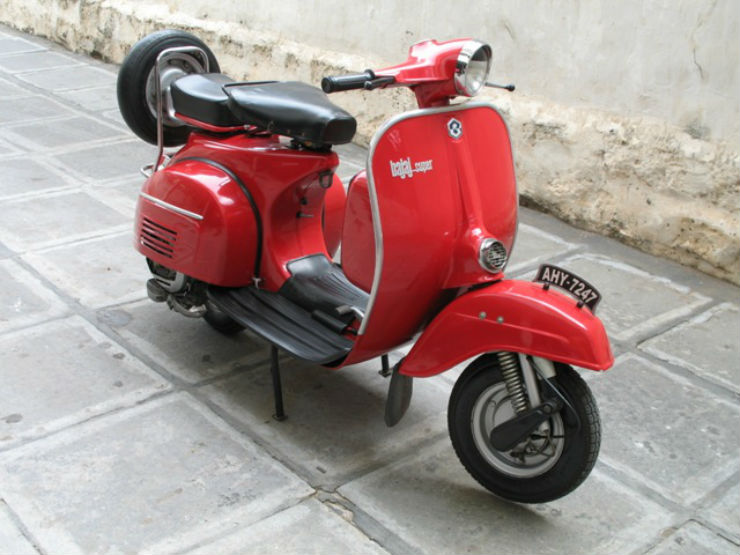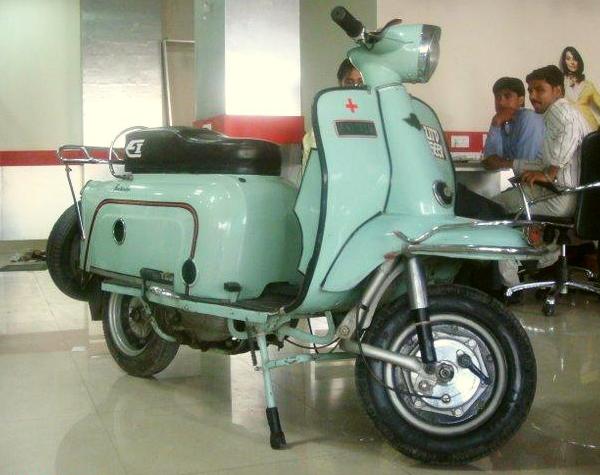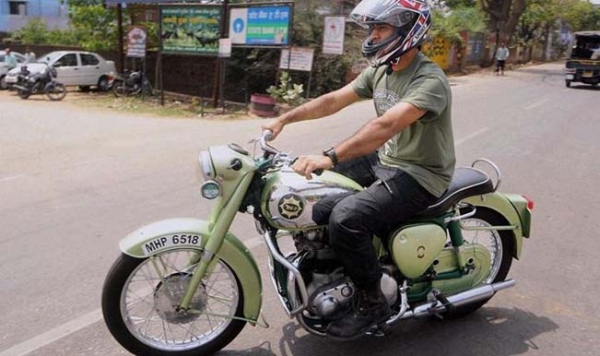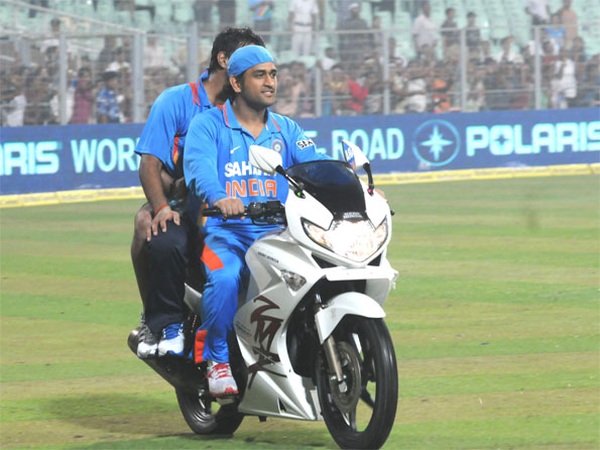There was a time when scooters were very popular with the Indian two-wheeler riding crowd. They even outnumbered motorcycles in terms of sales and came in different shapes and size. While the current scene is dominated by gearless scooters, the old beauties had a charm of their own. A lot of people have now forgotten the variety of scooters that were once sold in the country. For the same, today we take a look at 20 forgotten scooters of India
Bajaj Cub
![]()
The Cub was a limited edition model from Bajaj which came along back in 1984. Among several things, it had an electronic ignition system and engine kill witch which were unique at that time. This scooter was powered by a 100cc, 2-stroke, single-cylinder engine that produced 5.6 bhp. The engine was mated to a 3-speed manual gearbox.
Bajaj Spirit
![]()
Next up is the Bajaj Spirit, an automatic scooter that was launched in 1999 to take on the popular TVS Scooty. The Spirit was powered by a 60cc, 2-stroke engine. The engine produced a maximum power of 3.5 Bhp along with a peak torque of 4.3 Nm. The scooter had a CVT, which made it the first gearless scooter from the company.
Bajaj Bravo
![]()
The Bravo was another 2-stroke scooter by Bajaj that was launched in 1999. It featured transparent indicator housings and was powered by a 145.5cc air-cooled engine which was equipped with a superior reed valve technology. The engine churned out 8 Bhp of power along with 13.2 Nm of torque and came mated to a 4-speed manual transmission.
LML Supremo
![]()
LML was a two-wheeler manufacturer based out of Kanpur that released quite a few popular bikes and scooters. One among them was the Supremo that was launched in 1995. The Supremo was a stylish looking scooter that was powered by a 149.5cc 2-stroke engine. This engine churned out 7.5 Bhp of power along with 8 Nm of torque and came mated to a 4-speed manual transmission.
LML Sensation
![]()
Next up is another offering by LML that was launched in 1996. Called the Sensation, it was powered by a 125cc 2-stroke engine that produced a max. power of 6.5 Bhp and a peak torque of 7 Nm. During its time, the was among the most stylish scooters on sale in the market.
LML Trendy
![]()
As its name suggests, the LML Trendy was a small scooter launched to rival the Bajaj Sunny. It was powered by a 60cc, 2-stroke engine that churned out 3.4 Bhp of power and 3.5 Nm of torque and came mated to a CVT. Its unique design and the oddly-placed spare wheel made it different from the rest of the scooter and it became quite popular among the youngsters.
Bajaj Stride
![]()
The Bajaj Stride was among the long line of geared scooters launched by the company. It featured a rectangular headlamp that gave it a unique look in that era when almost every other scooter had a round headlamp casing. Powering the Stride was a 145.5cc, 2-stroke engine that produced a maximum power of 7.1 Bhp and a peak torque of 10.8 Nm.
Bajaj Super
![]()
The Bajaj Super was among the more popular scooters launched by the company. It was powered by a 145.5cc single-cylinder air-cooled engine that was also found on the Stride. This engine churned out 7.1 Bhp and 10.8 Nm and was launched way back in 1976. The Super was quick to gain a lot of popularity and was a common sight on the roads.
TVS Spectra
![]()
The TVS Spectra was a scooterette with a distinctive design. However, instead of featuring a CVT transmission, TVS equipped it with a 4-speed manual transmission. It was quite popular among the youth and was powered by a 147.5cc 4-stroke engine. This engine belted out a maximum power of 8 Bhp along with a peak torque of 8 Nm.
LML Star Xpress
![]()
Another LML scooter that was quite popular in certain pockets of the country was the Star Xpress. The scooter offered a 149.56cc, 2-stroke engine that came mated to a four-speed manual transmission. It produced a max. power of 9.5 bhp and a peak torque of 13.2 Nm. The scooter was even exported to the USA and the UK under a different name.
Lambretta
![]()
The Lambretta is still loved by many for its flamboyant style and evergreen design. It was assembled in India by Automobile Products of India (API) and was sold in India after the independence. API built the Li150 Series 2 model, which was sold as the Lambretta in our country. It was renamed to Lamby in 1976. The scooter was powered by a 148cc, two-stroke engine that propelled the scooter to a top speed of 80 km/h.
Vijay Super
![]()
The Vijay Super was another popular scooter of its time and had a distinctive styling. In 1972, the state-run Scooters India Ltd took over the manufacturing and sale of Lambretta scooters in India and launched Vijay Super in India. The same scooter was exported as the GP150 to many international markets.
Bajaj Sunny
![]()
Another scooterette that used to be really popular back in the day was the Bajaj Sunny. The Sunny was powered by a tiny 50cc 2-stroke engine that made a very modest 1.2 Bhp. The Sunny was promoted with the tagline of ‘Ride the red-hot super looker teen machine’, which made it pretty clear that the Sunny was aimed at the teeny-boppers.
Kinetic Honda
![]()
The Kinetic Honda was India’s first two-stroke automatic scooter and was very popular among the scooter buying lot. It was aimed at the youngsters but was in fact bought by people of various age groups. Powering the Kinetic Honda was a 98cc, 2-stroke engine that produced a maximum power of 7.7 bhp and a peak torque of 9.8 Nm.
Royal Enfield Fantabulous
![]()
Yes, this scooter was really sold by Royal Enfield! Named as the Fantabulous, this geared scooter was an attempt by RE to grow in the scooter market of the country. Powering the scooter was a 175cc, 2-Stroke engine from Villiers that churned out a maximum power of 7.5 bhp. The Fantabulous came with an electric-starter.
Bajaj Chetak
![]()
The Bajaj Chetak is easily the most popular geared scooter of its time. Launched back in 1976, this scooter was named after the legendary horse of Rana Pratap Singh. The “Hamara Bajaj” tagline that was used to promote the Chetak is something that most of us still would still remember. Powering the Chetak was a 145cc, two-stroke engine that produced a maximum power of 7.5 bhp along with a peak torque of 10.8 Nm.
Bajaj Legend
![]()
The Legend was among the first few 4-stroke scooters from the Pune-based two-wheeler manufacturer. It looked stylish and featured a powerful 145.5cc air-cooled, four-stroke engine that produced a maximum power of 9 Bhp along with a peak torque of 10.8 Nm.
Bajaj Saffire
![]()
The Bajaj Saffire had a much modern design language than other models launched by the company in past. It was powered by a 92.0 cc, 4-stroke, air-cooled engine that came mated to a CVT transmission.
Kinetic Pride
![]()
Among the various scooter launched by Kinetic in India, the Pride was a futuristic-looking scooter launched back in 1996. It was based on the Kinetic Style and was targeted at young people who wanted style along with decent power. Powering the scooter was a 72.86cc, 2-stroke engine.
Kinetic Blaze
![]()
The Kinetic Blaze can be said to be the first maxi styled scooter of India and was among the most powerful scooters launched in India. It was launched in 2006 and was powered by a 165cc engine. This engine churned out a commendable 11.5 Bhp of power along with a peak torque of 12 Nm and was mated to a CVT transmission. The Blaze had a true top speed of more than 100 km/h and featured a unique design for its time.
Source: 1,3,4,5,6,7,8,9,10,11,12,13,14
Also Read: MS Dhoni's AWESOME collection of bikes: Yamaha RD350 to Kawasaki ZX-14R




























































